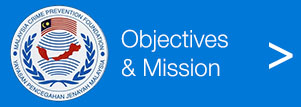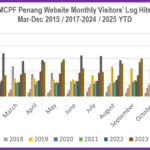
MALAYSIAN cybersecurity authorities are warning of a surge in scam advertisements flooding search engines and social media platforms: fake job offers, instant loan schemes and counterfeit luxury goods.
To tell the size of the surge in scam adverts, one just has to see what search engines like Google blocked or removed last year, 14.2 billion ads. It also suspended 39.2 million advertiser accounts, including 415 million ads and over five million accounts flagged for scam-related violations. But those blocked, removed or flagged don’t make up the total of scam ads out there.
Cybersecurity Malaysia is of the view that the best line of defence remains a cautious user. No debate here. But it must surely be aware that not all users are learned enough to know what HTTPS or URLs are. These users require more than perfunctory advice to be cautious. There is no doubt that scam ads have become sophisticated, but cautious users would be able to detect the red flags that they come attached with. An investment scheme that promises instant huge returns is one. A limited-time offer is another.
Vigilance by Internet users is certainly critical, but it is not the only weapon against scam ads. Our cybersecurity authorities, too, must wage an aggressive war against scammers by getting search engines, social media platforms and telecommunications companies to do their part.
But a war against scammers can only be won if the few agencies tasked with cybersecurity get their act together. When more than one agency is in charge, things are sure to slip through. In the case of Malaysia, we can think of at least three agencies — the Malaysian Communications and Multimedia Commission (MCMC), Cybersecurity Malaysia and the police.
Universiti Sains Malaysia Cybersecurity Research Centre director Professor Dr Selvakumar Manickam is right in saying that inter-agency coordination needs significant improvement. He put it thus to the New Sunday Times: “The roles, responsibilities, and specific expertise of agencies such as the MCMC, Cybersecurity Malaysia and the police must be defined and streamlined.”
To him, comprehensive improvements are needed as to how scam advertisements are monitored and regulated in Malaysia.
In the United Kingdom, the Financial Conduct Authority (FCA) springs into action relatively quickly. In 2023, the financial watchdog blocked 10,000 scam ads from Instagram, Facebook, YouTube and TikTok. The FCA also ordered businesses to amend or remove 8,582 promotions in 2022, besides publishing 1,900 alerts to consumers about potential scammers. We aren’t sure if any of our cybersecurity authorities does this, but we certainly don’t read about it.
It is hard to estimate how much Malaysians lost to scam ads, but scams in general cost 95,800 victims RM3.18 billion between 2021 and April last year, according to the Digital Ministry figures. This may just be the tip of the iceberg as many victims do not report being scammed.
As Selvakumar told the NST, Malaysia needs legislative and regulatory reforms. One such is shared responsibility for scam losses, holding social media platforms and telcos accountable as they are uniquely positioned to identify network-level threats. Besides, such legal reforms would incentivise them to adopt robust preventive measures.
This article first appeared on NST.
Past Events
- MCPF Penang Website www.mcpfpg.org Visitors’ Log hits a Monthly Record high of 23.24k in November 2025. Cum-to-date total: 977,865 (March 2016 to November 2025)
- MCPF SPS DLC participates in Camp for Uniformed Bodies at SJK (T) Nibong Tebal
- MCPF Penang engages in Operational Meeting at SMK Mengkuang, Bukit Mertajam to follow-up on CCTV Project Proposal
- MCPF Penang Quartermaster Munusamy Muniandy does an on-site Housekeeping / Maintenance inspection of MCPF Penang Office at PDRM IPK P. Pinang
- MCPF Penang & SPS DLC participates in PDRM’s Launching Ceremony of Amanita Taman Angkat at ADTEC ATM Kepala Batas






